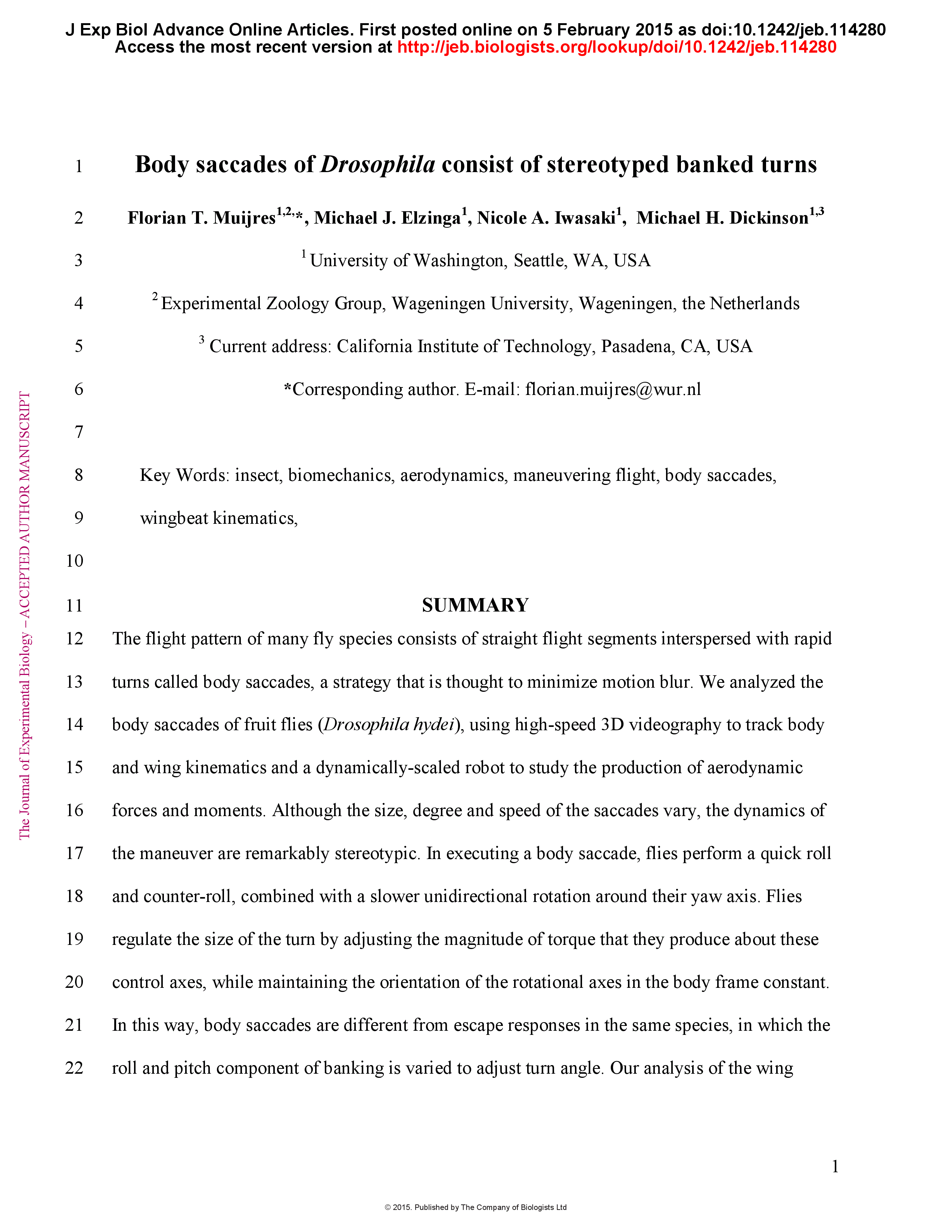Abstract
The flight pattern of many fly species consists of straight flight segments interspersed with rapid turns called body saccades, a strategy that is thought to minimize motion blur. We analyzed the body saccades of fruit flies (Drosophila hydei), using high-speed 3D videography to track body and wing kinematics and a dynamically-scaled robot to study the production of aerodynamic forces and moments. Although the size, degree and speed of the saccades vary, the dynamics of the maneuver are remarkably stereotypic. In executing a body saccade, flies perform a quick roll and counter-roll, combined with a slower unidirectional rotation around their yaw axis. Flies regulate the size of the turn by adjusting the magnitude of torque that they produce about these control axes, while maintaining the orientation of the rotational axes in the body frame constant. In this way, body saccades are different from escape responses in the same species, in which the roll and pitch component of banking is varied to adjust turn angle. Our analysis of the wing kinematics and aerodynamics showed that flies control aerodynamic torques during the saccade primarily by adjusting the timing and amount of span-wise wing rotation.








